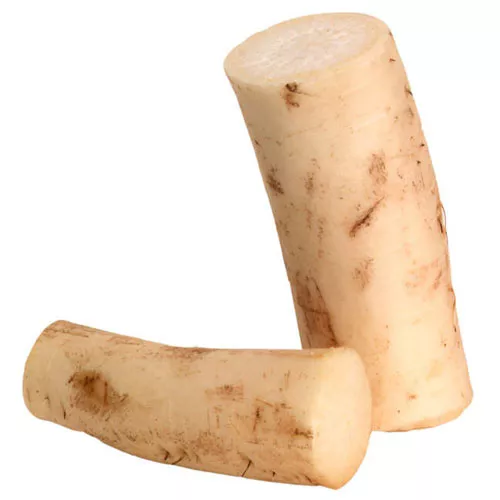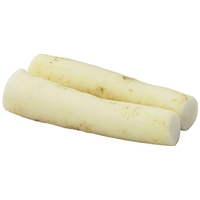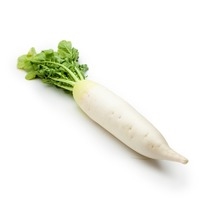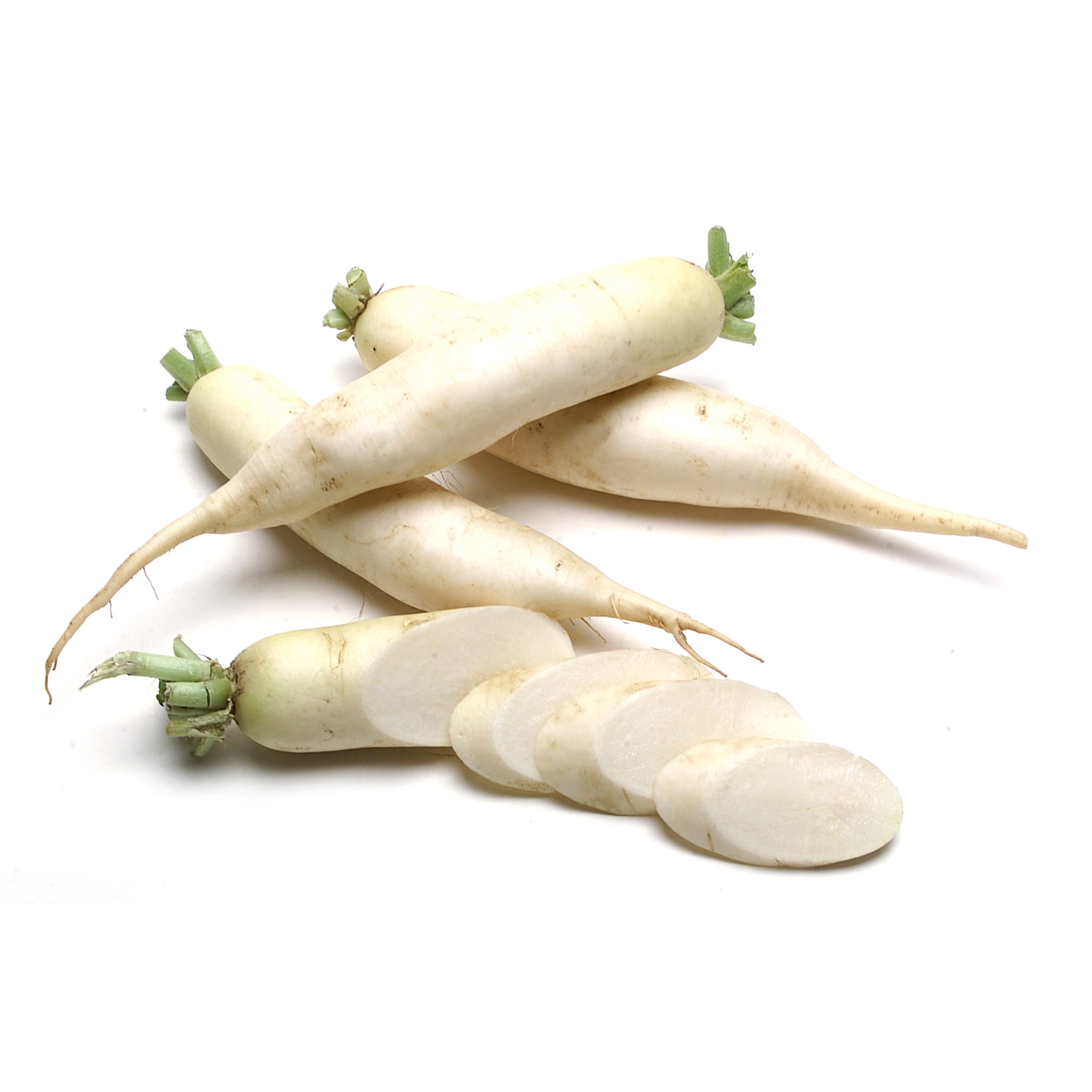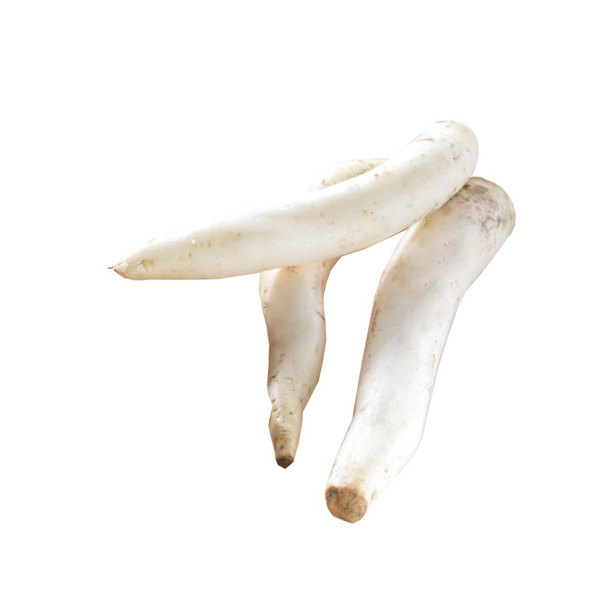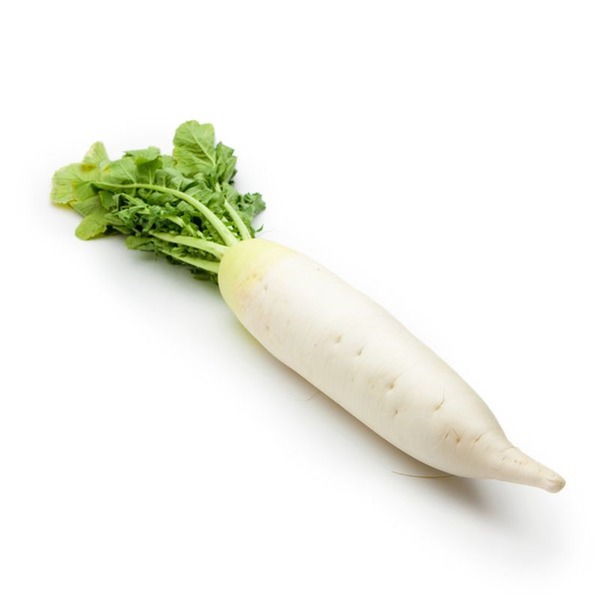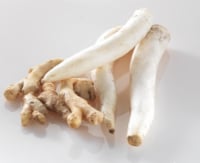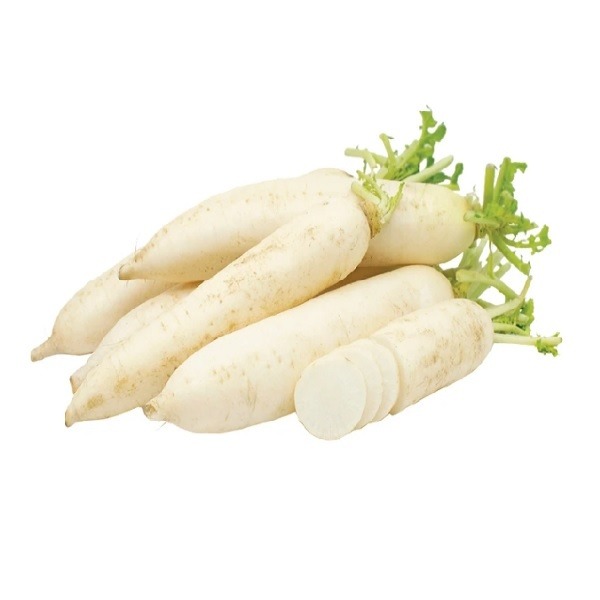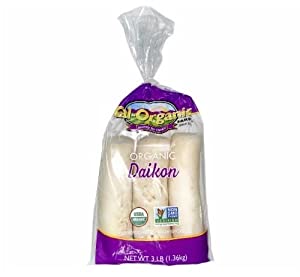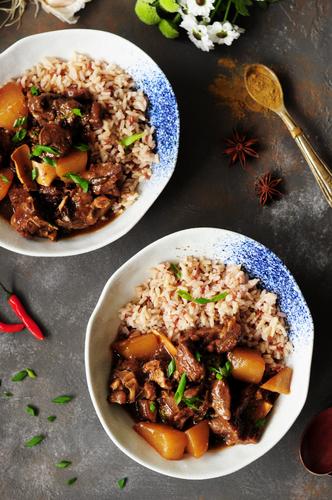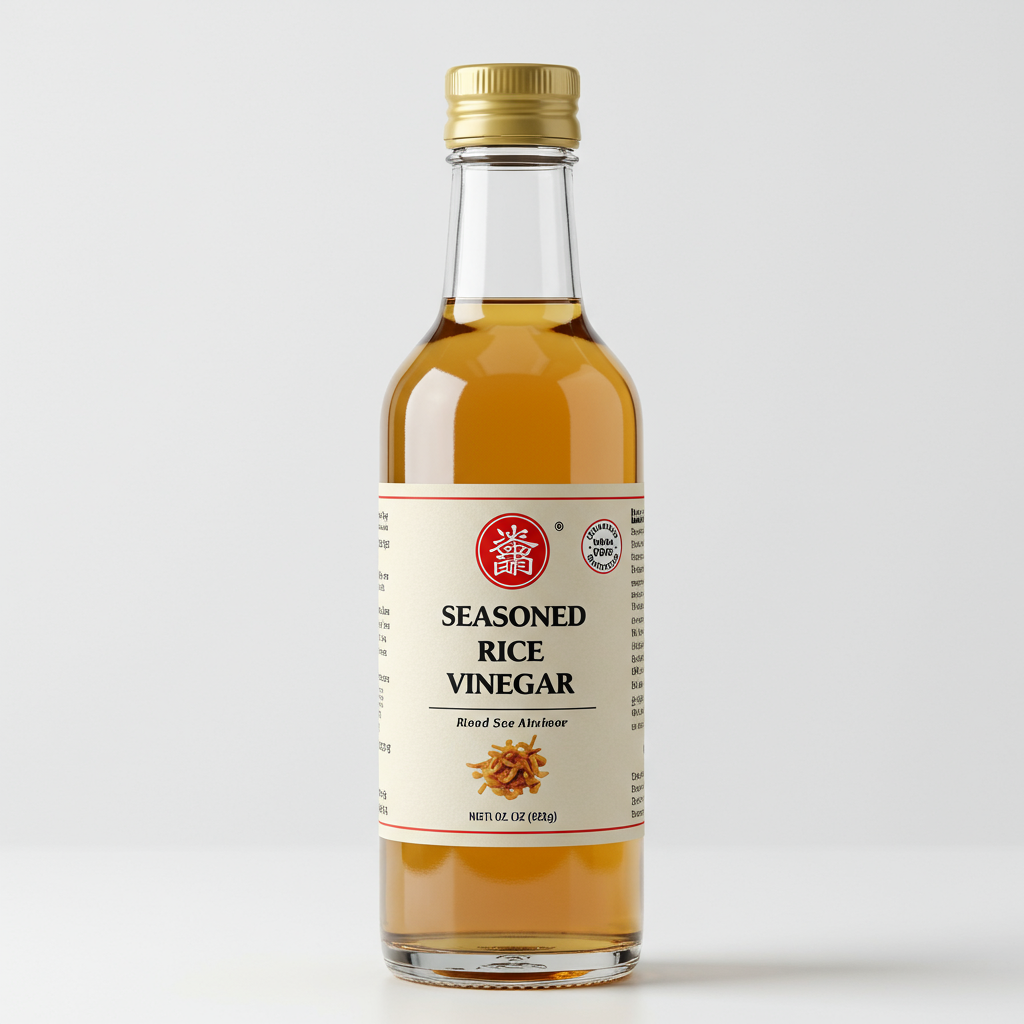SALADS
SOUPS
SIDE DISHES
Daikon Radish
Daikon Radish, scientifically known as Raphanus sativus var. longipinnatus, is a large, white, elongated root vegetable commonly used in Asian cuisine, particularly Japanese, Chinese, and Korean cooking. The name 'daikon' means 'big root' in Japanese. Known for its crisp texture and mild, slightly sweet flavor, it can be consumed both raw and cooked, making it a versatile ingredient.
Daikon radishes can be used in various dishes, such as salads, pickles, stir-fries, and soups, providing a touch of brightness and crunch. They are also considered a healthy choice, with high levels of vitamin C, potassium, and antioxidants, and are frequently utilized as a digestive aid.
67%
CARBS
0%
FAT
33%
PROTEIN
103 Daikon Radish Products
Used In 9 Recipes
Daikon Radish Is Frequently Used With
Daikon Radish FAQ
Daikon radish is often a mystery to many home cooks outside of Asia. They are usually at a loss as to how to incorporate this root vegetable in their meals. True, Daikon is quite versatile, can be used either raw or cooked, but this flexibility often leads to confusion. People go wrong primarily in not preparing Daikon properly. For example, overcooking Daikon can destroy its crisp texture and delicate flavor.
To get the most of this ingredient, the key is in its preparation. If you want to use it raw, it's best thinly sliced or grated, usually for salads or as a garnish. For cooking, it's best to cut into chunks and added to stews, soups or stir fries, where it can absorb the flavors of the other ingredients.
A little-known fact about daikons is that, they can be pickled too, which is a common practice in Asian cuisines.
Can you eat Daikon radish raw?
How do you cook with Daikon radish?
Is Daikon radish spicy?
What does Daikon radish taste like?
What dishes are Daikon radish used in?
How do you store Daikon radish?
Can Daikon radish be frozen?
Can you eat Daikon radish leaves?
What can I use instead of Daikon radish?
Can Daikon radish cause digestive issues?
Expiration & Storage Tips
When does daikon radish expire?
A fresh, uncut daikon radish can last for two weeks to a month in the fridge. Once it has been cut, it's best to use it up within about a week. If you've bought a daikon radish in a sealed, unopened package, it should be good until the printed expiration date. Daikon radish can also be frozen for up to six months.
How do you tell if daikon radish is bad?
You'll know your daikon radish is going bad if it becomes soft and limp instead of being firm and crunchy. It may also develop dark spots or start turning a yellow color. If you notice a strong, unpleasant odor, or if there's mold, that's a sure sign it's past its prime and should be tossed.
Tips for storing daikon radish to extend shelf life
• To extend the shelf life of your daikon radish, store it in your refrigerator's crisper drawer - this keeps it nice and chilly, yet prevents it from getting too dry.
• After cutting the radish, store the slices or pieces in a well-sealed container in the fridge, completely covered with water. This water bath helps keep them fresh.
• If you wish to freeze daikon radish, first slice or chop it, then blanch it for a couple of minutes before plunging into ice water. Dry the pieces thoroughly, then freeze them in a single layer on a baking sheet. Once frozen, transfer them to a freezer-safe bag.
• For defrosting, move frozen radish pieces directly to your cooking pot. Avoid thawing at room temperature as it can lead to texture changes.
EXPIRES WITHIN
8 - 15
DAYS
Health Info
Macros
4g
CARBS
0g
FAT
2g
PROTEIN
Allowed on these diets
LOW FAT
HIGH CALCIUM
VEGETARIAN
KETO
PALEO
WHOLE 30
MEDITERRANEAN
LOW CARB
VEGAN
LACTOSE FREE
GLUTEN FREE

